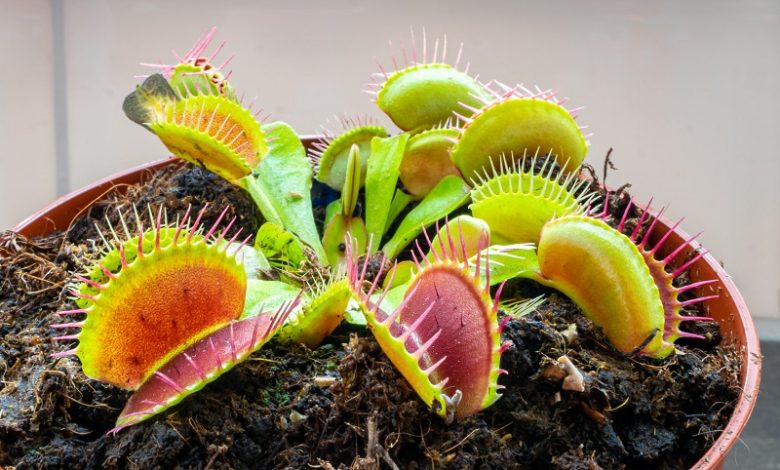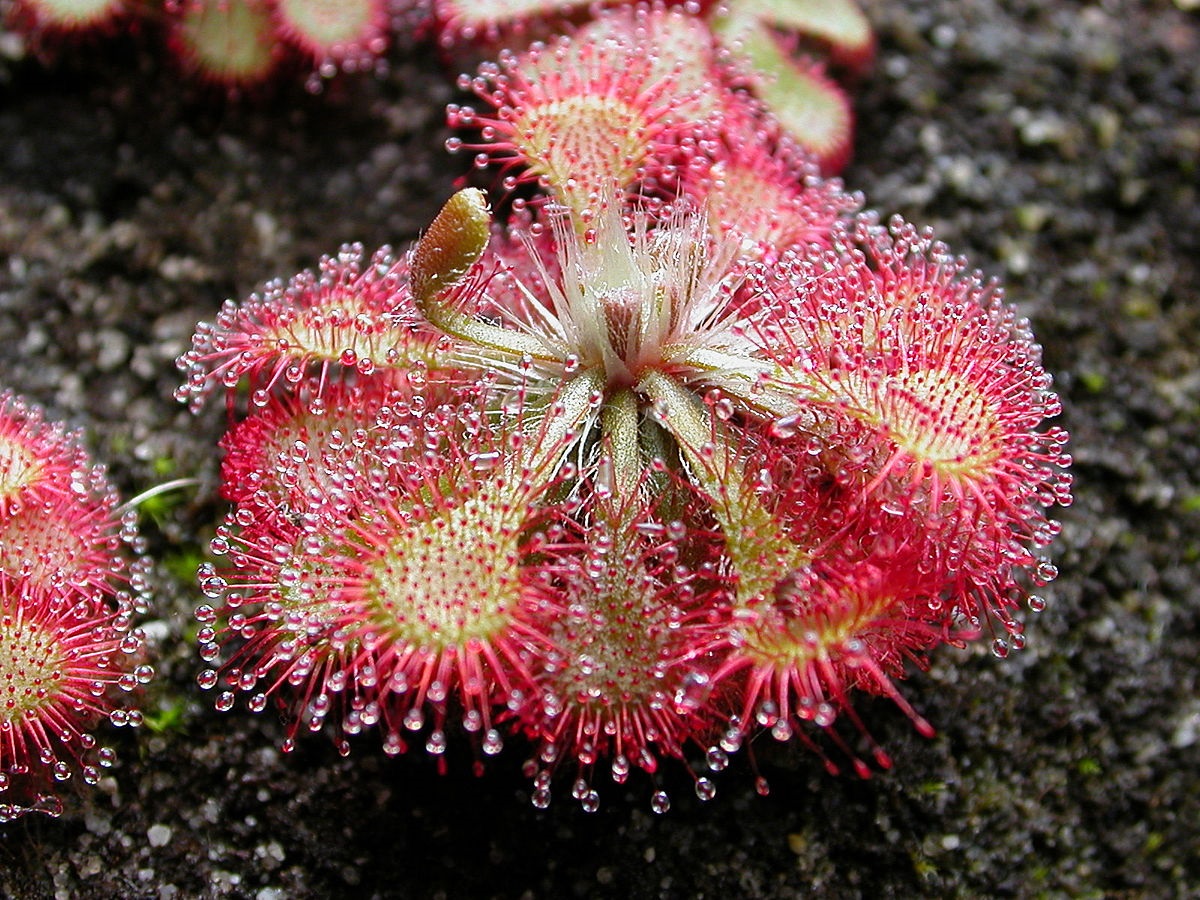
A main characteristic of plants is that they obtain the necessary energy through photosynthesis. Carnivorous plants also carry out photosynthesis, but since they grow in soils poor in nitrogen, they need to make up for this nutritional deficit. How do they do that? Well, feeding on protozoa and insects.
We currently know that there are different types of carnivorous plants depending on the mechanism they use to catch their prey, however, the first treatise about them was not written until 1875, the evolution suffered since then has led to an Approximate total of 630 different species of carnivorous plants. Do you want to know more about these genuine organisms? In this article, we show you 5 types of carnivorous plants.
Dionaea muscipula
Do you want to take care of a carnivorous plant? The species Dionaea muscipula, also known as the Venus flytrap (making a clear reference to its diet) is one of the best-known and most exotic.
This plant has flowers, but it is in its leaves where we find at the end of the same two lobes that hide inside three tiny sensitive hairs. When the insect comes into contact with one of these hairs, the lobes close, and the insect is trapped.
It is a capture mechanism specialized enough to be able to distinguish between the stimulus caused by an insect and that caused by a simple drop of water. When these lobes close, the cilia on the edges intertwine with each other to prevent prey from escaping.
Nepenthes Bicalcarata
It is known as a pitcher plant due to the genuine shape it has, like other carnivorous plants of the same family it has a stem that can reach 15 meters in length, and at the end of this stem we find leaves that can measure 30 centimeters and that end up forming a jar or bowl structure, where the trap is located.
Inside this bowl is a fluid synthesized by the nectar glands of the plant itself, which is supposed to be similar to a kind of syrup. Insects are attracted by the odor given off by this fluid and fall into the “jug” formed by the plant.
Sarracenia Purpurea
Another of the 5 types of carnivorous plants is Sarracenia purpurea. The purple flower of this plant is really beautiful, therefore this carnivorous plant can be used successfully as an ornamental plant.
It also has a kind of pitcher formed by its leaves, although this capture mechanism is ineffective against at least 1% of insects that approach the plant. In the cases in which it is effective, the prey falls into the jar and drowns in the rainwater accumulated by the leaves. These same leaves synthesize digestive enzymes that allow the prey to absorb all the nutrients, which in this case, it can be an ant, fly, spider, or even a butterfly.
Pinguicula Grandiflora
This carnivorous plant is also known by the name of water violet, it is a beautiful plant that has a base of small light green leaves, a medium stem (it can reach 25 centimeters in length), and a single flower. violet (on rare occasions more than one).
At its base, the water violet has between 5 and 10 leaves, which are sticky and allow any insect that lands on them to remain attached to them. If you want to decorate your home with this beautiful carnivorous plant, you should bear in mind that it only develops properly in temperate climates and that it needs deep soil rich in organic matter.
Sundew Aliciae
It is another of the 5 types of carnivorous plants that we want to highlight. It draws attention to its appearance and color, mainly pale pink with fuchsia edges. It is characterized by growth in the form of very tight rosettes, which have tentacles on their surface, similar to those we could find in an octopus but not so obvious.
Insects are attracted to the tentacles precisely because of the coloration they acquire (the more intense the lighting is), but curiously, the flowers of this plant grow about 30 centimeters from the leaves with tentacles, precisely to avoid trapping insects. pollinators.
It is also a good carnivorous plant to have at home as it is easy to grow.




